These days all modern race bikes have a touch of aero about them, but time trial bikes still stand out.
Their extra-deep tubes, supersized chainrings, two-tier handlebars and disc wheels sacrifice (almost) everything else at the altar of aerodynamics.
This aero dedication makes time trial (TT) bikes look radical and go very fast: men's WorldTour and women's WorldTour time-trial specialists can average close to 50km/h.
In this guide to time trial bikes, we explain what makes TT machines so rapid, from their geometry to components, and lay out everything else you need to know, including how UCI rules constrain their design.
What is a time trial bike?
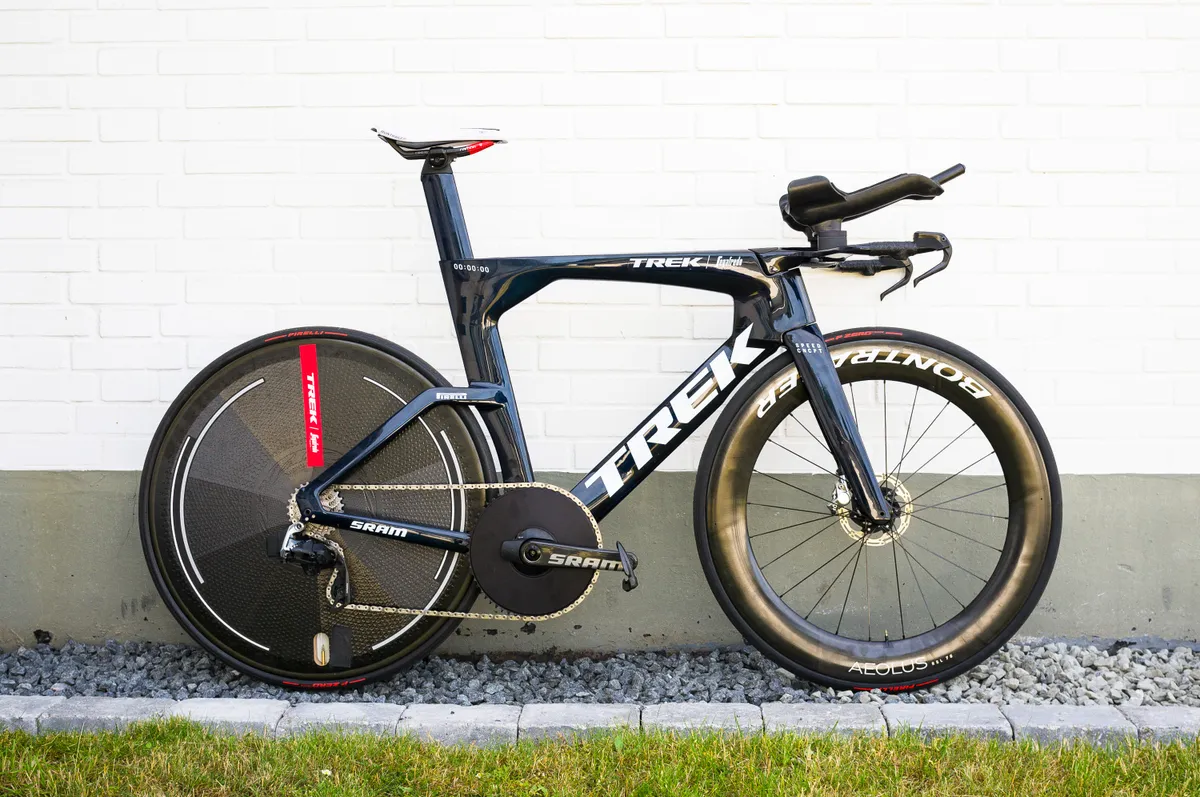
Unlike road bikes, which are designed to be versatile and perform well on a wide variety of courses and terrains, time trial bikes are designed with one major goal in mind: to be as fast as possible on straight, mainly flat, roads.
To achieve this, time trial bikes use specialist geometry and handlebars to coerce your body into a more aerodynamic position, plus aero-optimised tube profiles and components to cut through the wind.
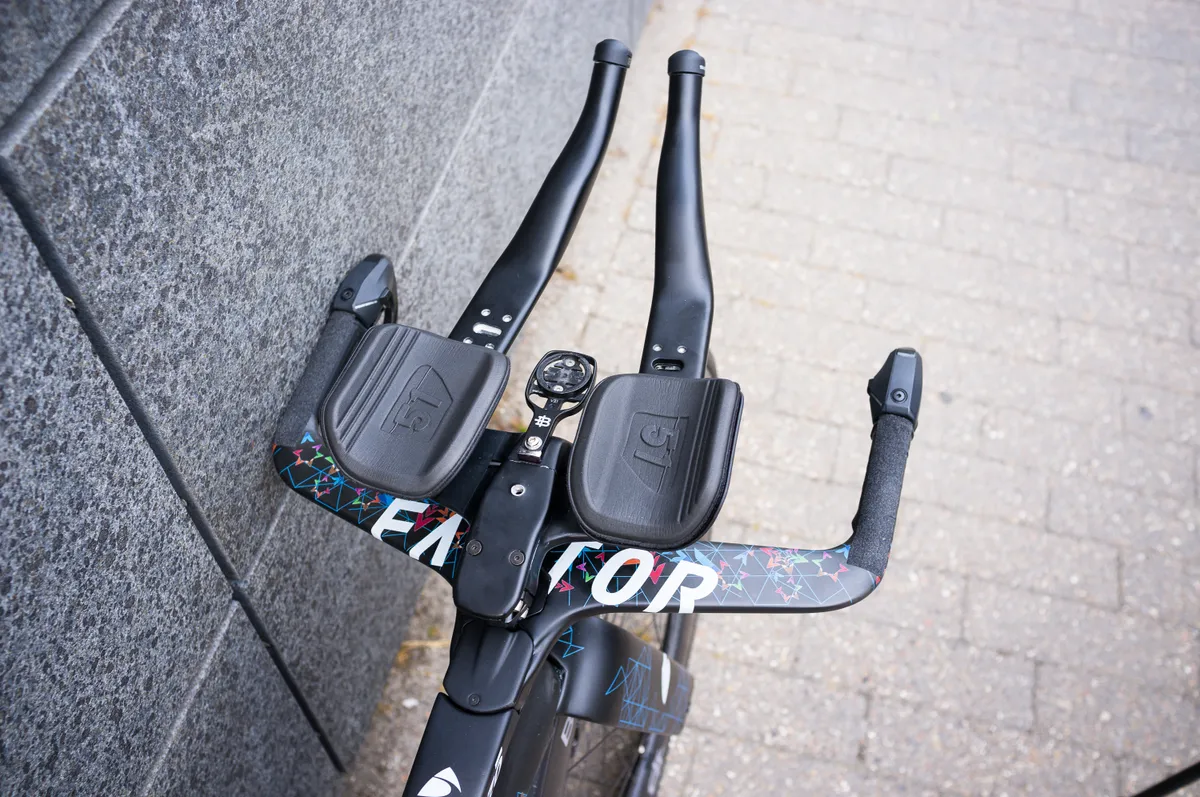
A time trial position compromises on handling and can be physically taxing to hold, but the positives typically outweigh the negatives.
After all, the rider alone accounts for the vast majority of aerodynamic drag (as we found in wind tunnel testing) in the rider plus bicycle system.
What are the differences between time trial bikes and triathlon bikes?
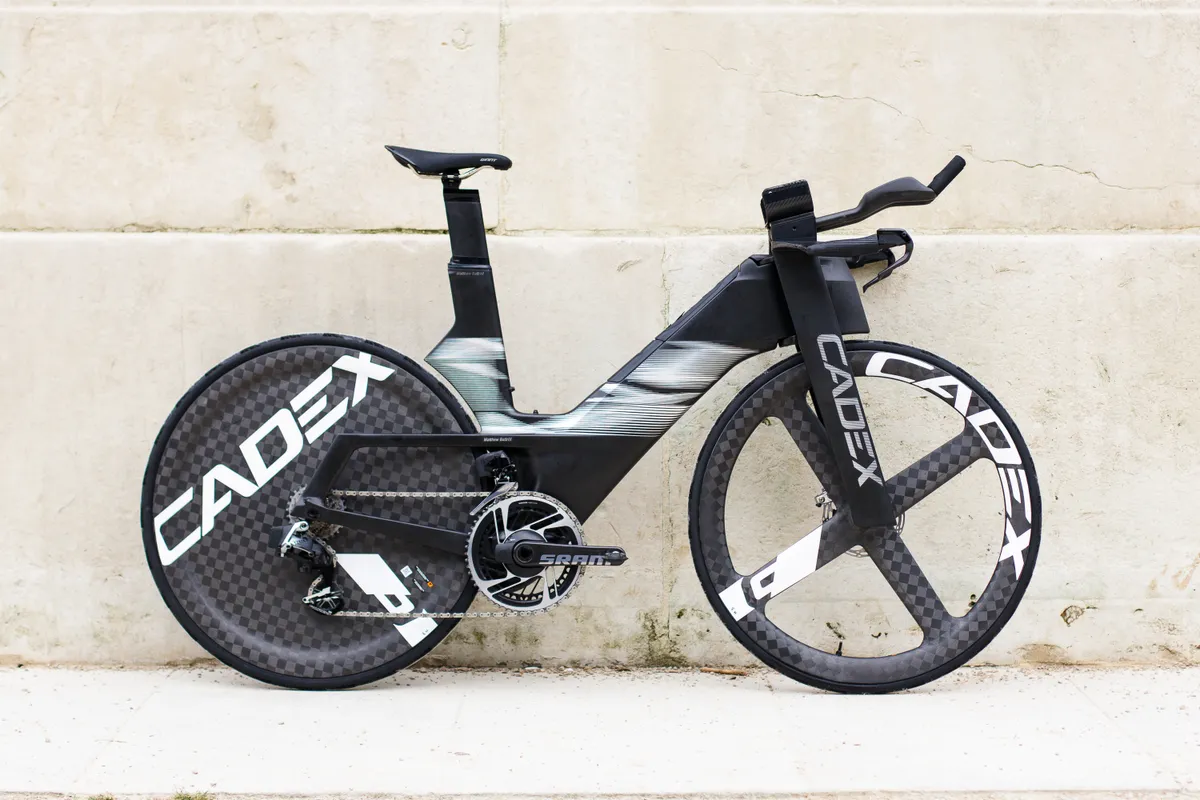
Time trial and triathlon bikes share many similarities – primarily because the bike leg of a triathlon is often a solo time trial.
The main difference is that, since triathlons are not governed by the UCI, triathlon bikes designed for draft-illegal events (those in which drafting competitors is banned) are not constrained by the UCI rules.
This allows triathlon bikes, and their designers, to be much more adventurous with design choices. This typically means deeper tubes and even frame shapes, thanks to materials like carbon fibre, that don’t conform to the typical double-triangle design bicycles typically used since their invention.

With the importance of long-distance events, such as Ironman, in mind, many triathlon bikes even take storage for food, drink, tools and spares into account. While road cyclists tend to carry things in their jersey pockets or in trendy handlebar bags, triathletes are now able to carry their things in aerodynamically integrated storage compartments.
It’s all very civilised, and – if designed correctly – can even reduce the bike’s aerodynamic drag.
UCI rules currently prohibit the use of such deep tubes or fairings, but cyclists taking part in time trials governed by the CTT (Cycling Time Trials – a UK-based governing body for time trials not regulated by the UCI) can take advantage because its rules are much less prescriptive.
It’s all about aerodynamics…
Handlebars
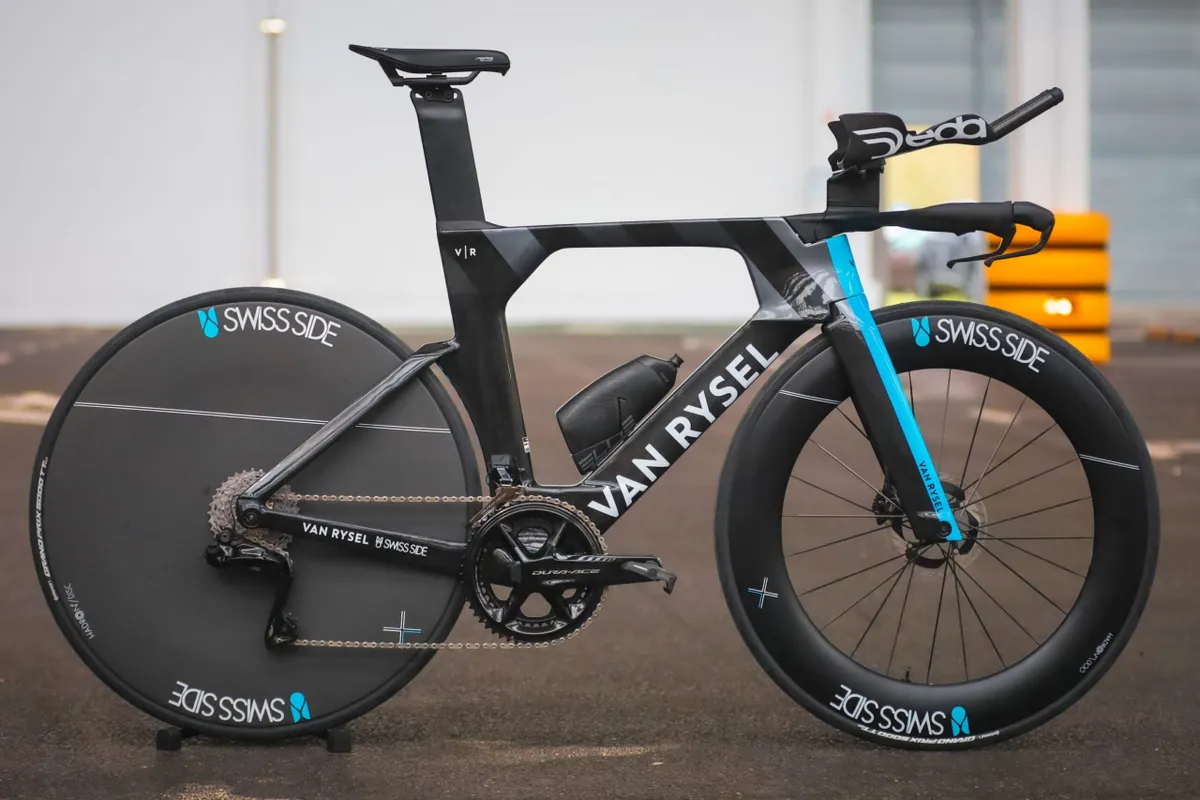
Time trial handlebars consist of a bullhorn handlebar (often referred to as a ‘base bar’) with a set of armrests and handlebar extensions situated on top, in the central area.
The extensions protrude forward, and, combined with the armrests, allow the rider to adopt and maintain a more aerodynamic body position than would otherwise be possible.
The armrests and extensions should be adjustable for both width and reach, to allow you to fine-tune your position. There are many pages of rules dedicated to restricting the range within which the extensions and armrests can be positioned in UCI sanctioned events, though.
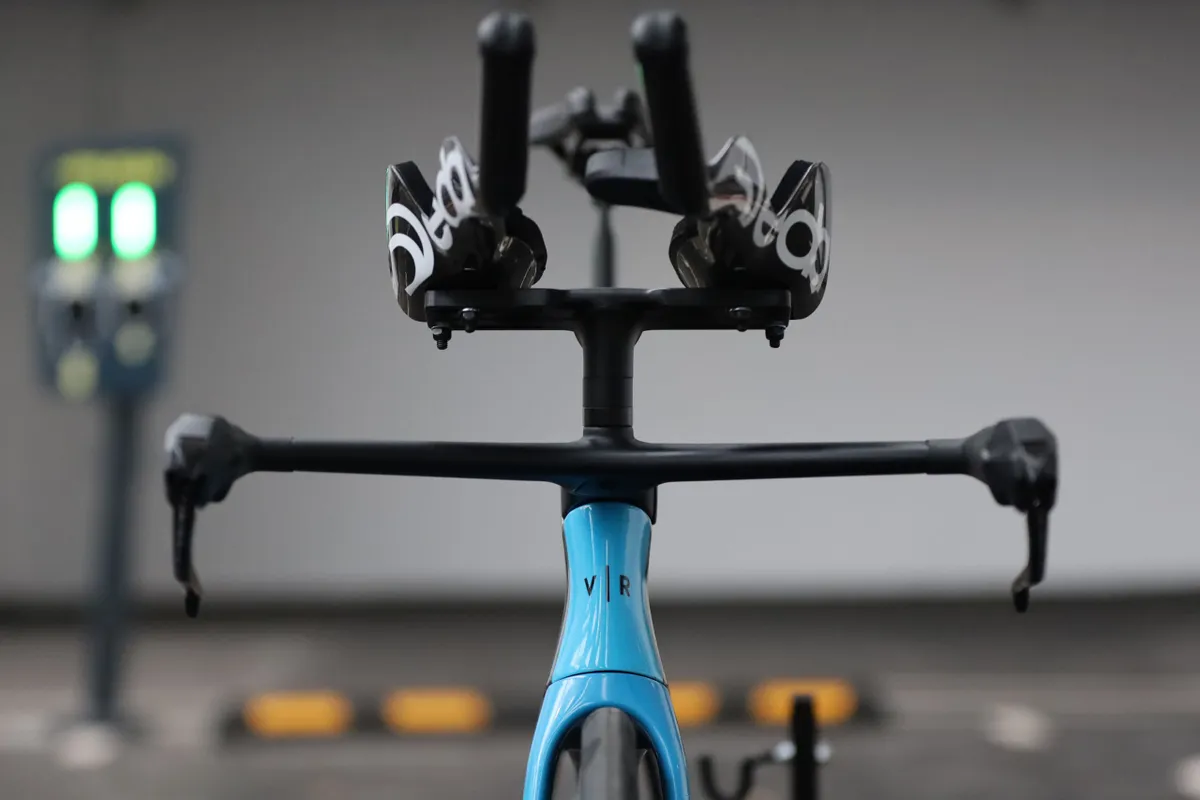
If you’re ever taking part in such an event, the commissaires may even use a complicated jig to ensure your bicycle fits within the permitted dimensions. Outside of UCI governed events, this is unlikely to be a concern.
The downside of such handlebars is that the brake levers are typically located on the end of the bullhorns, so you don’t have such immediate access to them while using the extensions.
For this reason, time trial and triathlon bikes are generally not deemed suitable for bunch riding (outside of the team time trial, of course).
Tube shapes and geometry
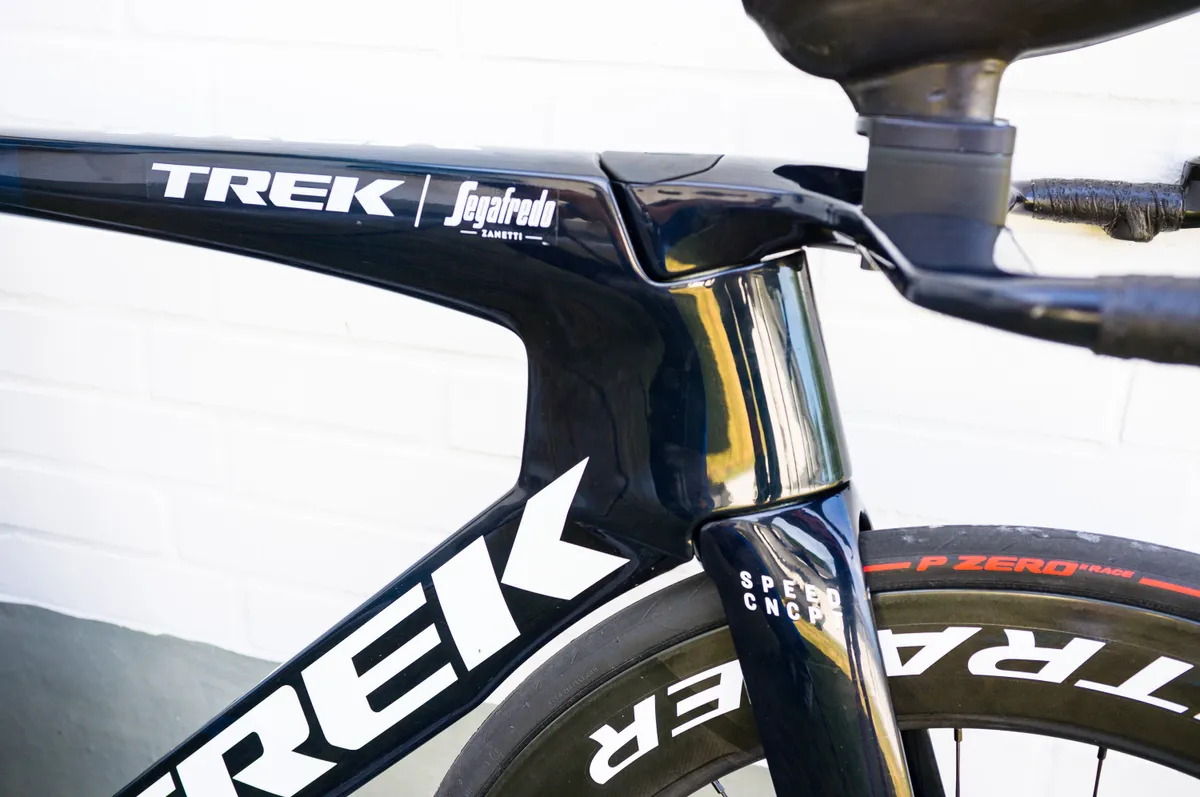
Aero is practically everything when it comes to time trial bikes, with weight being of only minor importance. Because of this, tube shapes are optimised to be as slippery as possible, within the UCI rules.
While older time trial bikes used narrow aerofoil shapes, modern machines have gravitated towards wider, Kammtail shapes.

These larger shapes are intended to trick the air into behaving like a much longer (and therefore more aerodynamic) aerofoil shape is present, and also provide benefits in terms of stiffness, weight and shielding water bottles from the airflow.
The geometry of time trial bikes also differs from that of road bikes. The most notable difference is that time trial bikes typically have steeper effective seat tube angles (around 75 to 78 degrees) compared to road bikes.
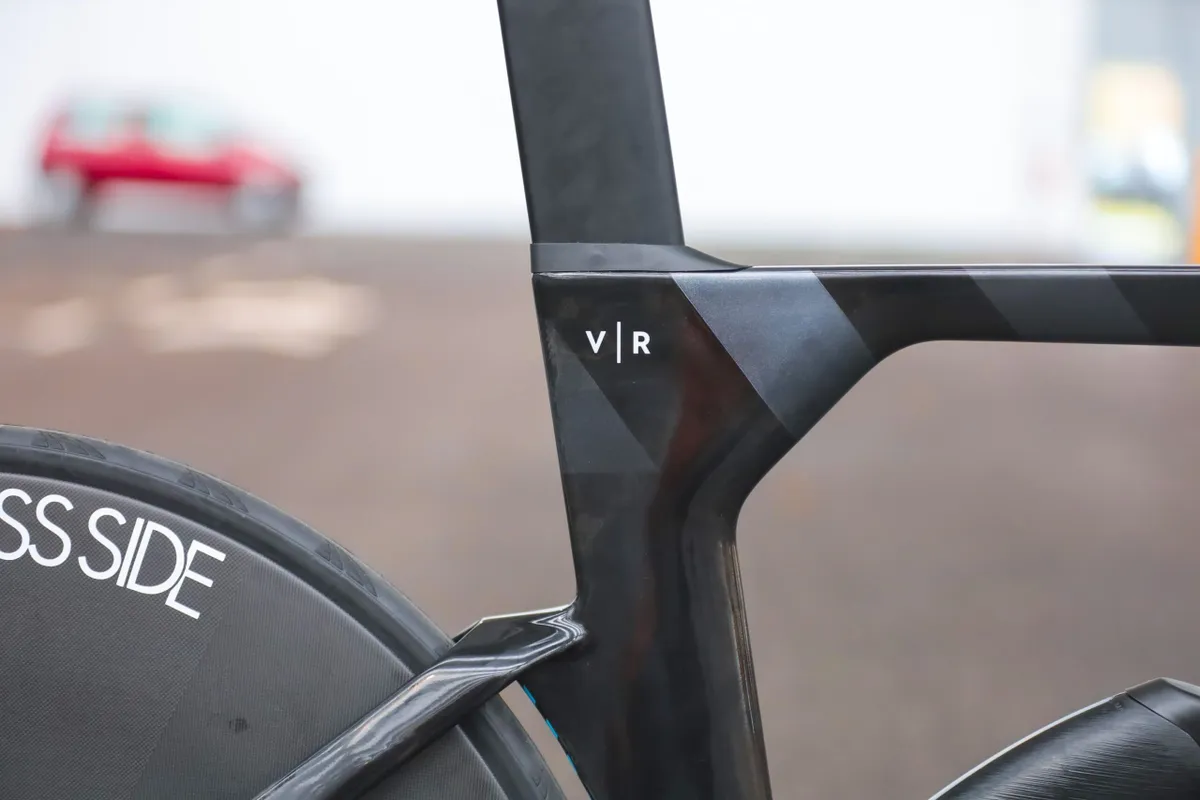
This puts the rider further forward of the bottom bracket, which can help prevent the rider’s hip angle from being too tight and impinging on athletic performance.
It does affect weight distribution, though, meaning more of the rider’s weight is placed on the front wheel of the bike. This can negatively affect handling, particularly on descents.
Wheels
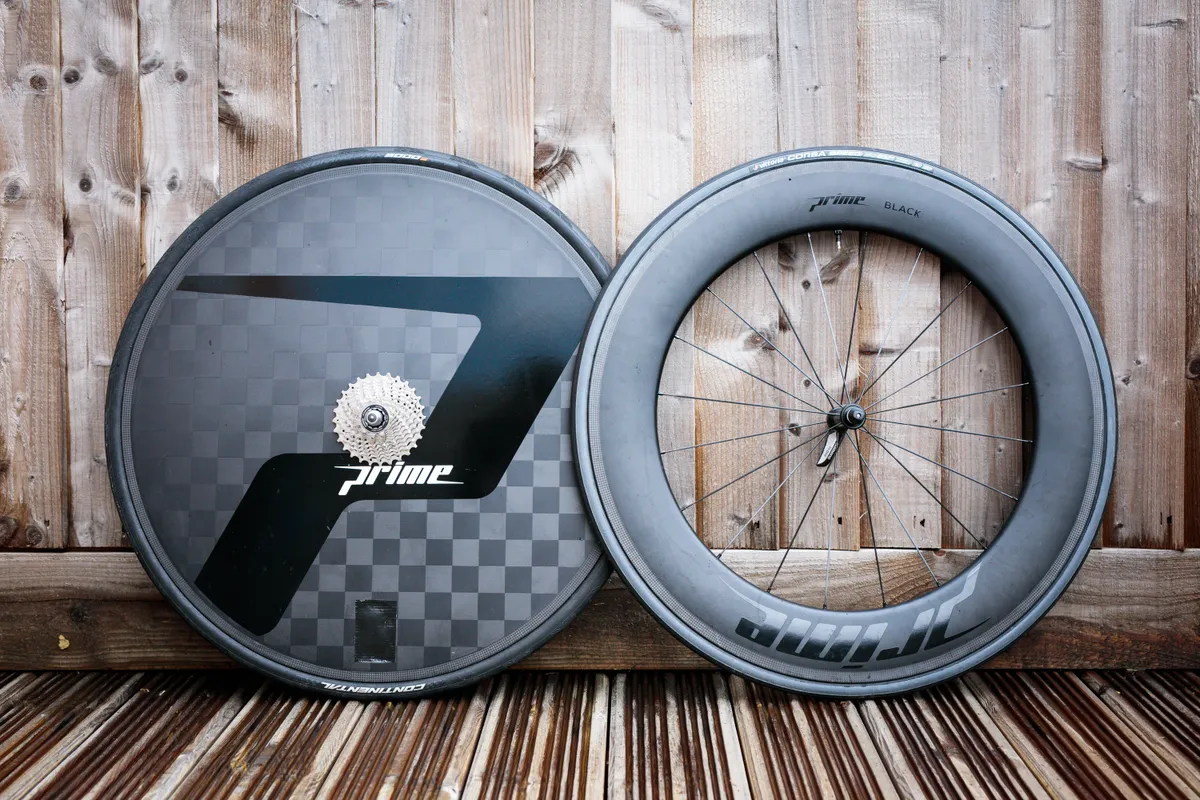
As with the frame, aero is everything when it comes to time trial wheels too.
The use of solid rear disc wheels and front wheels with ultra-deep rims or low spoke counts (such as tri-spoke wheels) are typical in time trials (front disc wheels are generally only permitted for use on the track).
There’s a balancing act to be had between using the deepest, most aerodynamic wheels you can get your hands on, and the negative effects such wheels can have on the bike’s handling on windy days.
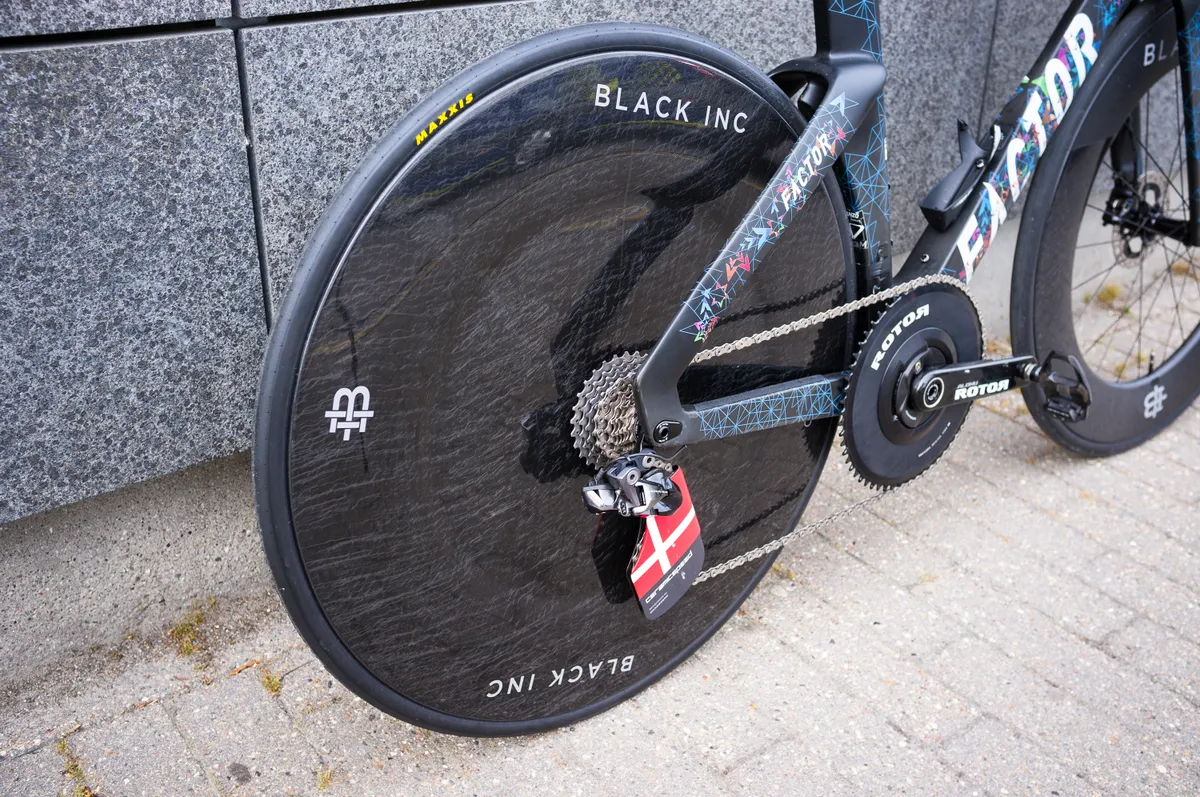
It’s rarely too windy for a rear disc wheel. In fact, according to Xavier Disley of AeroCoach, using a rear disc wheel can “help to stabilise a bike’s handling in strong winds, as it moves the centre of pressure rearwards, away from the front wheel”.
However, at the front of the bike, choosing the most aggressive wheel you can find won’t be the fastest option if it means you can’t control the bike.
Brakes
Until recently, bike manufacturers put a lot of effort into dreaming up aerodynamic solutions to hiding rim brakes within the fork or under the bottom bracket.
This usually meant compromised braking performance or complicated servicing (or both), but was acceptable in the pursuit of aero gains.
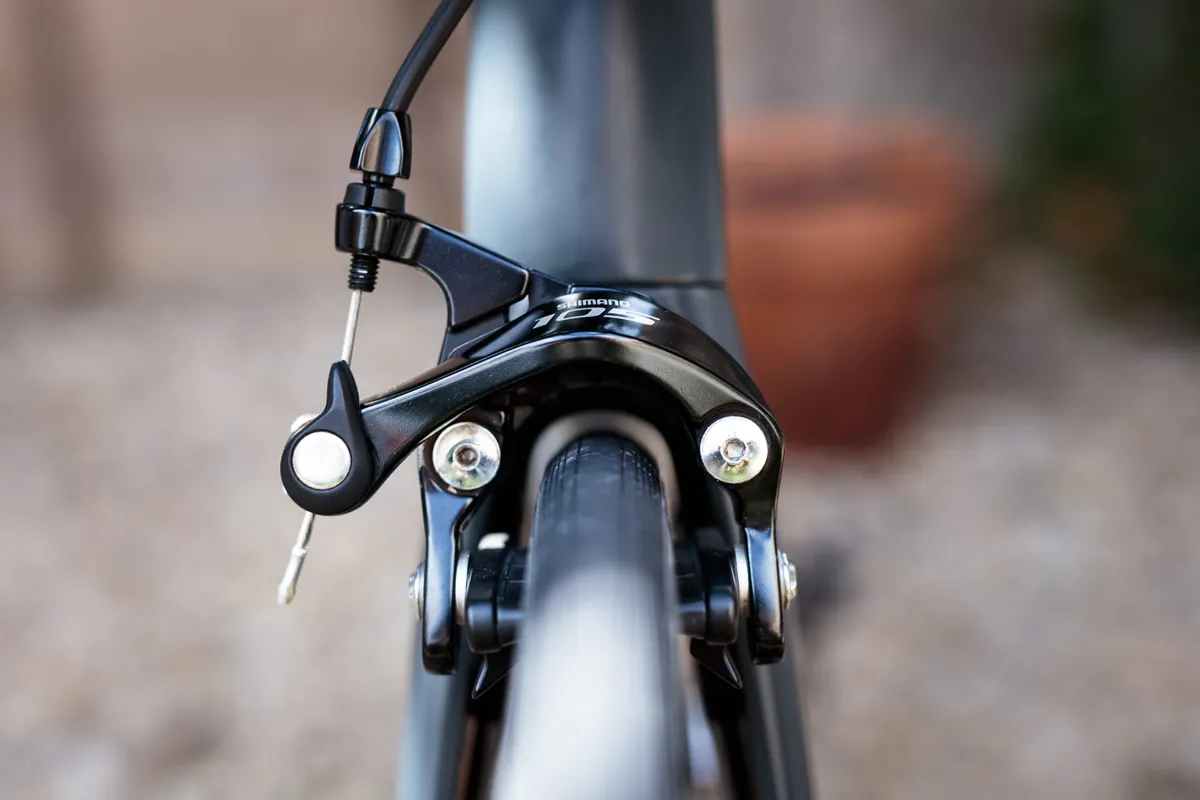
More recently, though, with the advent of disc brakes for road bikes, we’re seeing many new time trial bikes adopting disc brake technology.
Many have argued this is a step backwards in terms of aerodynamics. But removing the requirement for the rim to act as a braking surface, and for the frame to integrate two relatively large sets of rim brakes, opens up new design possibilities for wheel and frame manufacturers.

It’s therefore too simplistic to say that rim brakes are always more aero than disc brakes – it depends on how the components come together as an overall system.
It’s also undoubtedly the case that better braking performance can, on technical courses, help you to ride faster too. This is because it enables you to brake later and with increased confidence, which – all else being equal – helps improve your average speed.
Drivetrain
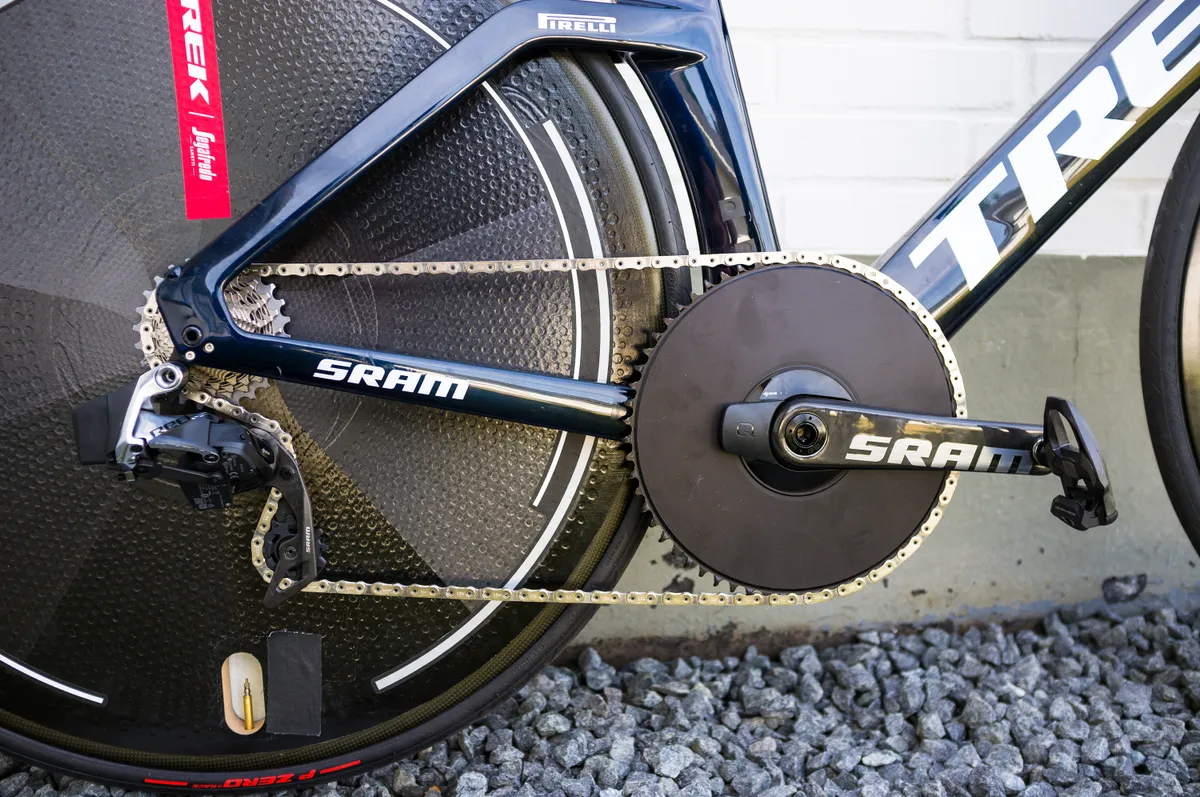
Time trials often take place on flat or rolling courses, so riders chasing every advantage can optimise their gearing to suit.
This typically means large chainrings (53-tooth or larger) and closely spaced cassettes. The former is useful for optimising chainline, and the latter helps riders modulate cadence more precisely, which can be important when riding close to your physical limits.
Given power is lost to friction within the drivetrain, dedicated racers will also look to optimise their drivetrain efficiency as well.
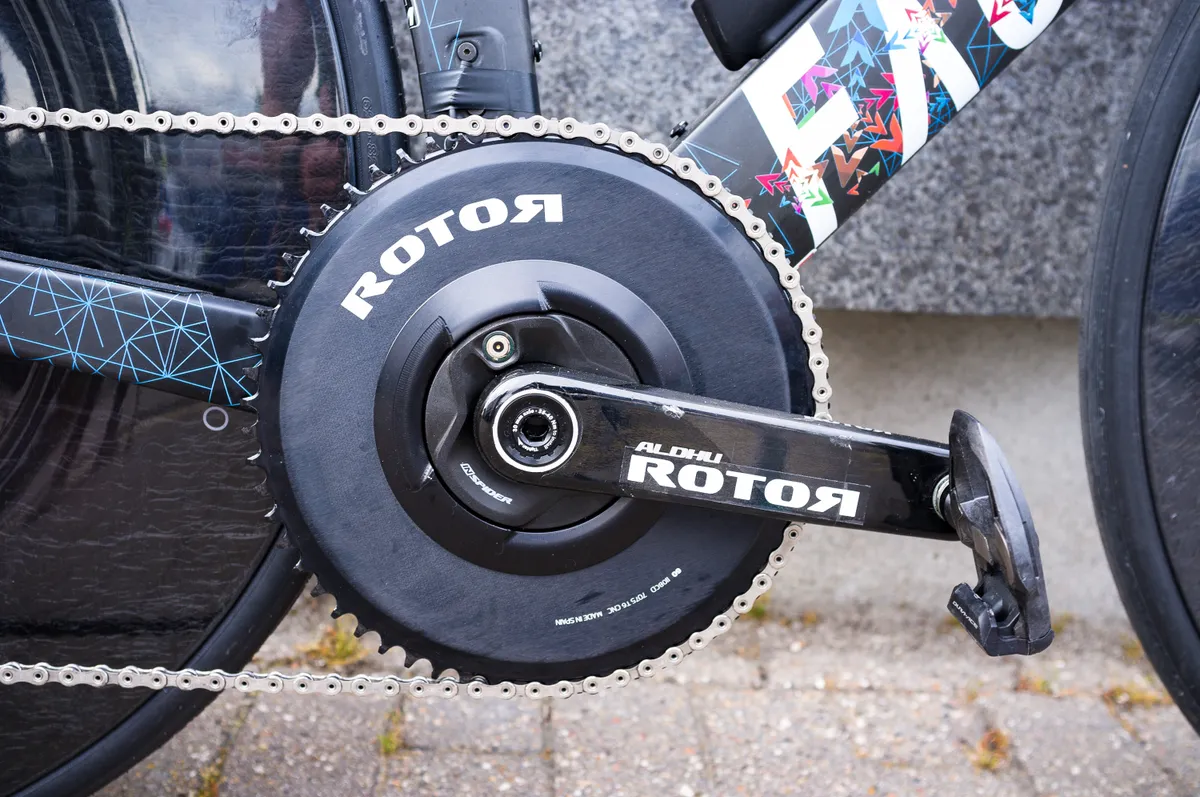
This means larger chainrings, cassette cogs, jockey wheels, as well as fast chain lube, high-quality steel or ceramic bearings and even 1x drivetrains or short cranks.
These are undoubtedly marginal gains, but a number of small gains may add up to something more significant on race day.
Tyres
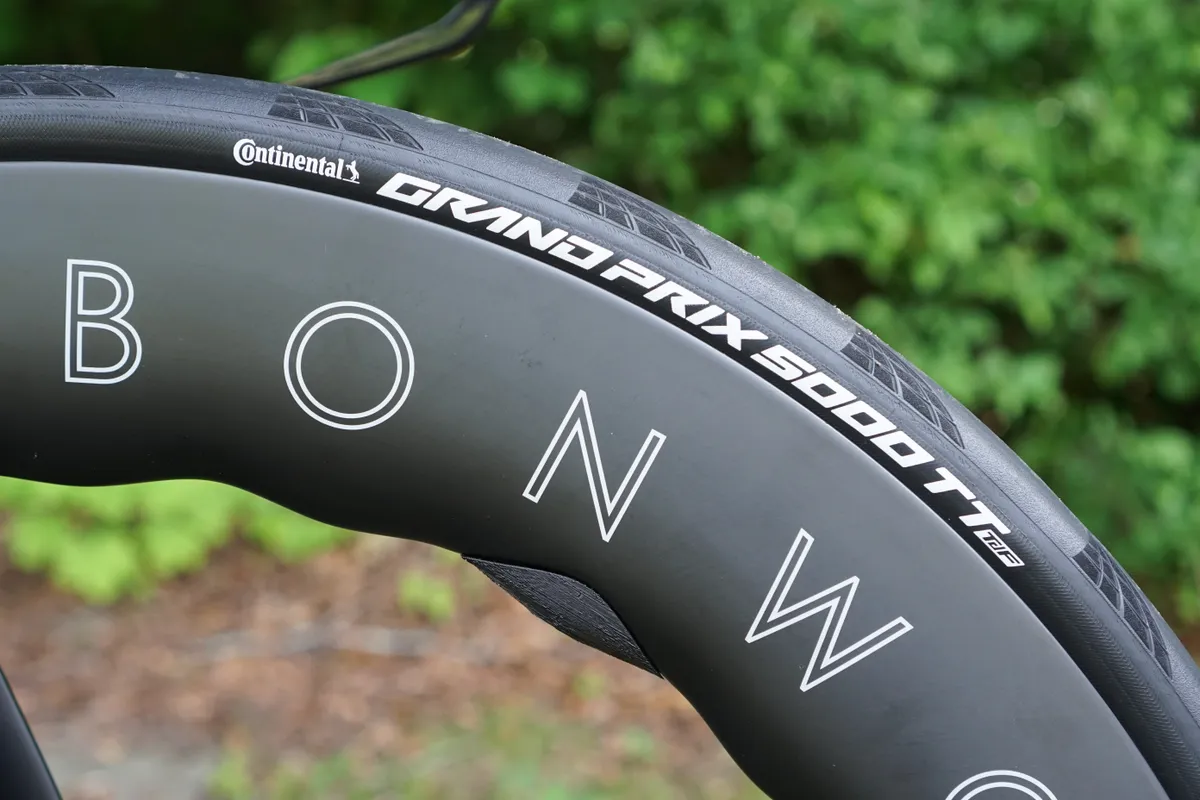
Although it doesn’t quite compare to aerodynamics, rolling resistance is still a key force working against the cyclist trying to ride faster. Optimising tyre setup to suit the course can therefore lead to significant gains.
The best road bike tyres and best tubeless tyres generally exhibit less rolling resistance than equivalent tubular tyres, and even the type of inner tube and quantity of tubeless sealant used will affect the amount of rolling resistance produced by the system.
Time trial-specific tyres favour outright speed at the expense of all else. This typically means puncture protection is significantly reduced, and wear rates are increased.
You’ll need to choose your tyres carefully, based on the nature of your event. Short time trials on good roads may call for the fastest, most delicate tyres available; Vittoria’s Corsa Speed, Veloflex’s Record, Schwalbe’s Pro One TT or Specialized’s Turbo Cotton are fine examples.

Longer time trials, or those held on bad roads, may require something more durable. Time lost having to stop to change a wheel or fix a puncture will likely outweigh what you’d gain with a faster, more delicate tyre.
Continental's GP5000, Goodyear’s Eagle F1 or Schwalbe’s Pro One are great all-round options, combining decent speed with good puncture protection.
It will always be faster to ride the fastest tyres, until you puncture. The balance of risk and reward will be different for each race and each rider.

Tyre aerodynamics are also an important consideration if you’re chasing the fastest all-out setup. For time trials, tyre width should be optimised to maximise the aerodynamic performance of the wheelset.
Many wheel manufacturers will have guidelines for the optimum tyre width for any given wheelset, but it usually just means picking a tyre slightly narrower than the external width of your rim.
For example, if your wheelset has a 28mm external rim width, then a 25mm tyre is likely to be the best option, aerodynamically.

Recent testing has even shown that tread patterns can have a small but measurable effect on aerodynamic performance.
Optimising tyre pressure is also important because pressures that are too high or low can increase rolling resistance significantly. It’s always worth checking the manufacturer's recommendations and experimenting yourself.
Fit and adjustability
Saddles

Given the aggressive nature of the time trial position, saddle choice is vital for maintaining comfort and preventing injury.
Look for something specifically designed to reduce soft tissue pressure when riding in an aerodynamic position because these will enable you to roll your hips forward and produce more power in the time trial position.
A saddle with relatively long rails will also allow for a greater range of positional adjustment, which may be useful if the seatpost on your bike is limited to a fixed position (this is typically more of an issue with older time trial bikes).
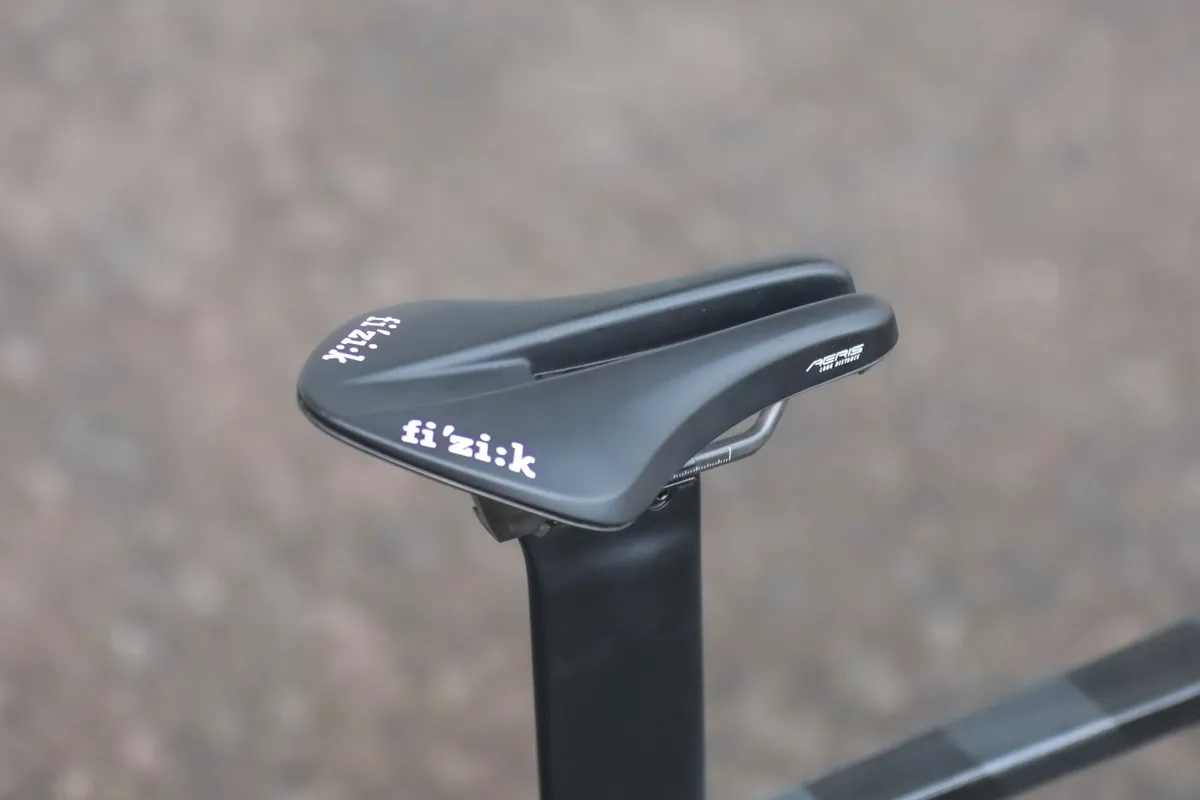
Saddle choice is personal to an extent and a good chamois cream can help, but you shouldn’t experience significant numbness or pain from riding time trials.
If you do, it’s worth seeking professional help, and a bike fit can help optimise both your saddle choice and position.
Handlebars part II
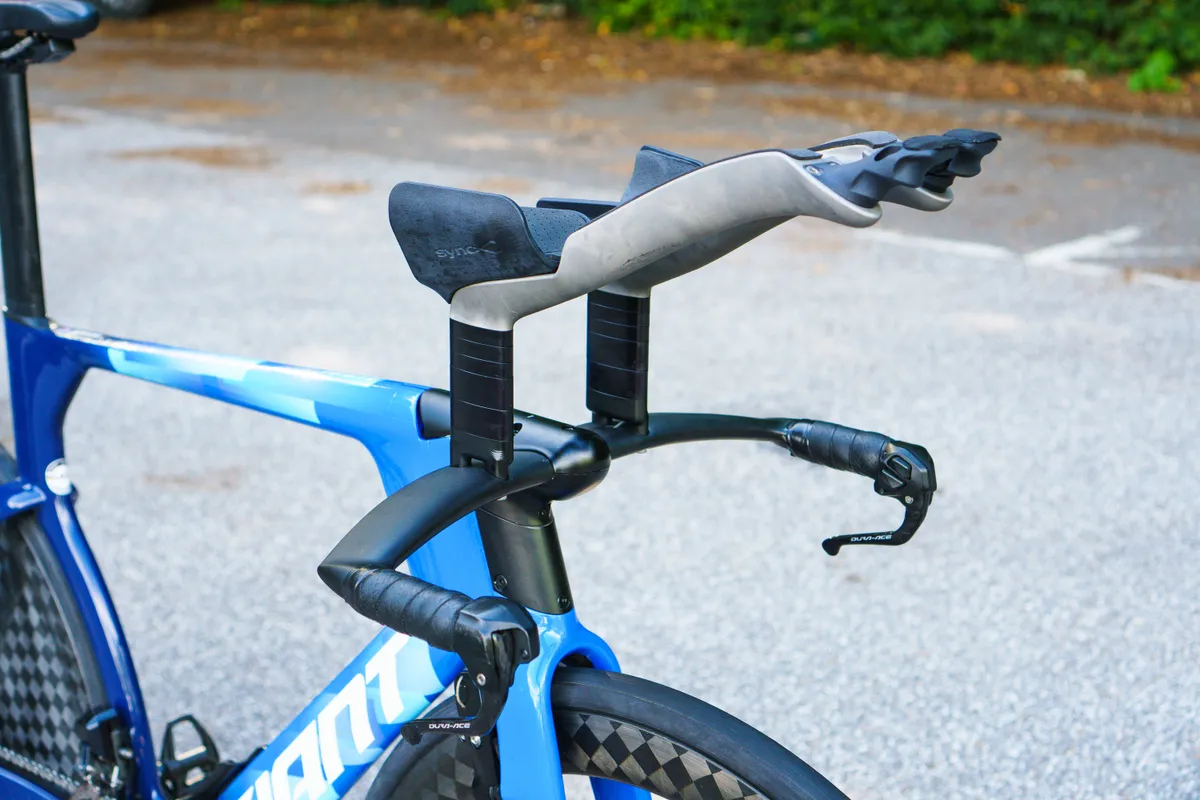
When shopping for a time trial bike, front-end adjustability is absolutely critical.
If the handlebar cannot be adjusted sufficiently to enable your body to adopt a sustainable aerodynamic position, then it doesn’t matter how well it performs in a wind tunnel.
Look for a handlebar that allows the armrests and extensions to be easily raised or lowered, and to be adjusted both fore and aft, and side to side.
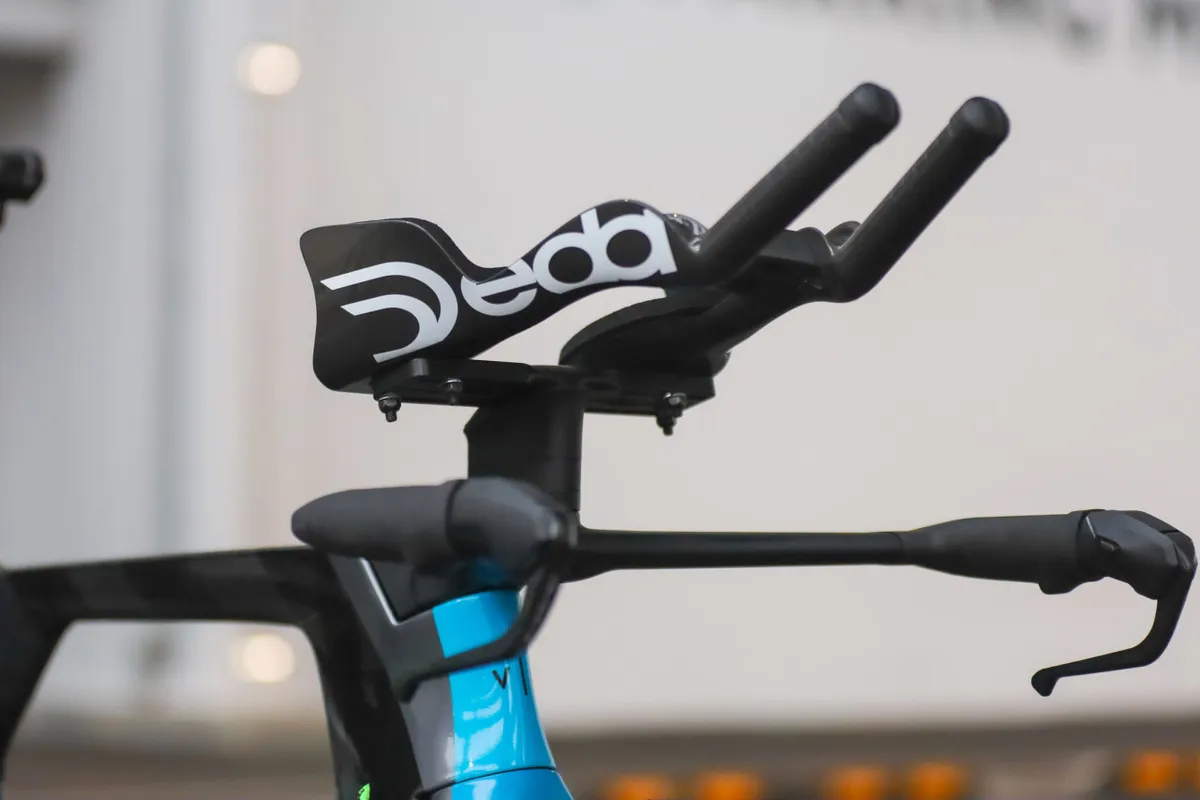
The ability to adjust the angle of the armrests and extensions is also useful. Many riders find, for example, that relatively high armrests combined with some upwards extension tilt is both more aerodynamic and comfortable than low armrests with flat extensions. A lower front end is not always faster.
Finding your optimum position is a case of experimenting, as it will be unique for every rider.
You can do these experiments yourself using equipment such as power meters, speed sensors and/or aero sensors, or get professional help at a wind tunnel or track.
As of 2023, riders competing in UCI-sanctioned events have more leeway over the reach of their time trial handlebars.
Time trial clothing, helmets and accessories

It’s not only about the bike. Because your body is the biggest cause of drag, anything you can do to improve how the air flows over it can have an enormous impact.
Skinsuits, time trial helmets, aero socks and shoe covers can all be used to make yourself more slippery.
With helmets especially, it’s hard to know which is the fastest for you without testing because how it interacts with your position on the bike is crucial.
There is a current trend, though, for both bigger time trials helmets, the Giro Aerohead II being the most notable and controversial example.
At the time same, some WorldTour pros are donning lighter, better ventilated time trial-inspired helmets, such as the POC Procen Air, for road stages.
Time trial history

The most notable early use of time trial-specific handlebars occurred in the 1989 Tour de France, when Greg Lemond used Scott time trial extensions and overturned a 50-second deficit to Laurent Fignon to snatch the overall victory by eight seconds.
Previously, riders had simply used relatively standard road bikes with normal drop or bullhorn handlebars for time trials, perhaps only changing wheels, gearing or tyres to suit the task at hand.
Francesco Moser, in preparation for his successful hour record attempts in 1984, moved things on with regards to bicycles, wheels and clothing, but body position remained relatively unchanged.
Lemond’s victory ushered in a new era, kicking off an arms race that culminated in innovative athletes and brands like Graeme Obree, Lotus and Pinarello taking things to their logical extremes.
UCI time trial rules
At this point, the UCI (Union Cycliste Internationale – the sport’s global governing body) stepped in and put a stop to all the fun, introducing a set of strict regulations (known as the Lugano Charter) around how road, time trial and track bikes could be designed and what positions riders could adopt on those bikes.
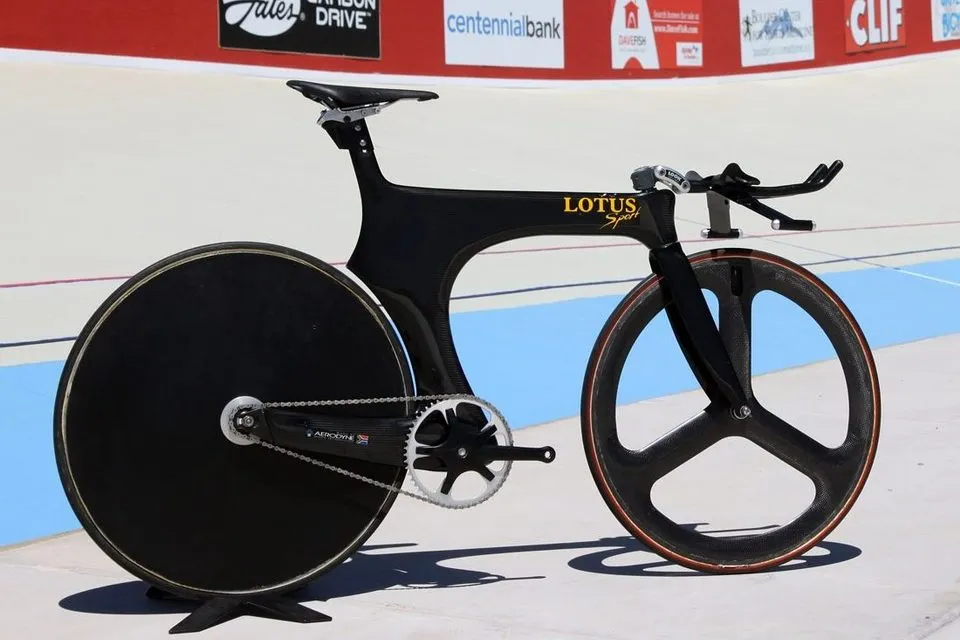
The banning of innovative equipment and techniques by the UCI is a grand (and much maligned) tradition within cycling that continues to this day.
Clever drag-reducing ideas such as the ‘praying mantis’ time trial position, vortex-generating dimples on skinsuits, long socks, aero leg gel and, most recently, the ‘supertuck’ position, have all seen use at the pointy end of the sport before being arbitrarily outlawed by the powers that be.
The objective of all of this is that the sport of cycling should remain an athletic rather than an engineering endeavour, an aim which – to briefly give credit to the UCI – isn’t entirely without its merit.

To give an idea of where things could have ended up without such a set of rules, the Human Powered Vehicle Hour Record currently stands at 92.432km (set using a MetaStretto faired recumbent bicycle).
That’s 35.64km further than the current men's UCI Hour Record (56.792km), set by Filippo Ganna in 2022. The difference can be attributed almost entirely to aerodynamics, so clearly the UCI has to draw a line somewhere.
Nevertheless, as with any set of rules, canny athletes will continue searching for loopholes and overlooked opportunities to exploit.
And, given the aerodynamics of conventional upright bicycles are so sub-optimal (in terms of how the rider is positioned while using one), opportunities for improvement undoubtedly remain.
